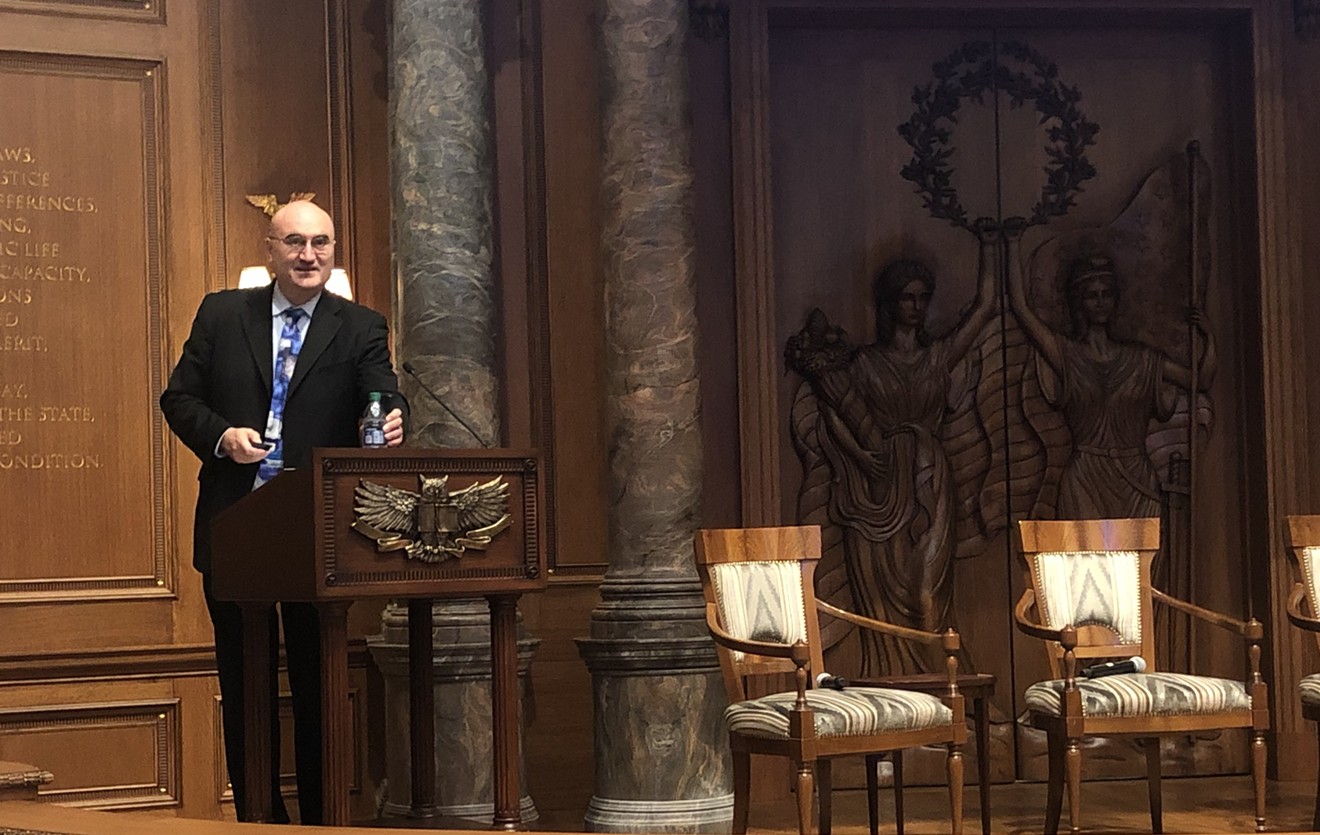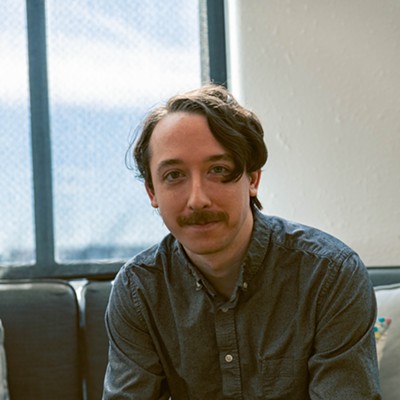The event, The Death and Life of Dallas Transit Symposium, was held Friday morning at Old Parkland. The forum was divided into three panel discussions featuring city leaders such as Dallas Area Rapid Transit board of directors members Dominique Torres and Jon-Bertrell Killen, as well as Chief of Transportation Michael Rogers, City Council member Omar Narvaez and many others.
The main points from the symposium came during a keynote presentation by Jarrett Walker, whose consulting firm the DART Board recently contracted to devise a new plan for Dallas’ bus system.
Walker has 25 years of experience in public transit planning in cities on several continents. He has led the planning for most of the ridership-increasing network redesigns in the U.S. since 2011, including Columbus, Richmond, Anchorage and, closest to home, Houston. He's the author of the book Human Transit: How Clearer Thinking About Public Transit Can Enrich Our Communities and Our Lives.
To Walker, the discussion of public transit is a discussion about personal freedom.
Projected above him is a diagram of Dublin, Ireland, with a marker that represents a person named Jane near Dublin City University. Highlighted in purple on the diagram are the areas Jane can get to in about 45 minutes.
“She’s thinking, ‘Where can I be in 45 minutes?’” Walker says. “Now, that question isn’t really a question about transportation because what she’s really asking is, ‘What jobs could I get to? What schools could I go to? Where could I shop? Where could I worship? Who will I meet?’
“This might even determine who she will marry. All those things are only possible if you can get to them in the amount of time that you have in your day.”“(W)hat is freedom, but the presence of actual options, the presence of actual choices you can make.” — Jarrett Walker
tweet this
There is a wall around Jane’s life, Walker says, defined by the limits of where she could get to in a reasonable amount of time. With network replanning, Walker says the boundaries can be pushed. He contends this makes Jane freer.
“Because what is freedom, but the presence of actual options,” Walker says, "the presence of actual choices you can make. You are not free as a shopper if you can only get to one grocery store, especially a grocery store that only sells one kind of milk.”
But, when it comes to replanning a transit system, Walker says a city must choose between two goals: increased ridership or increased coverage. A city can either make it useful to the largest number of people or give access to all. Both have upsides and downsides. For example, if coverage is the overall goal, there will be more political equity in a transit system. If it’s ridership, the system will support dense redevelopment and potentially have more environmental benefits.
Everyone wants both. Everyone knows that, he says. But, before a new plan can be drawn up for a new bus system, Dallas must choose what is more important: ridership or coverage.
Walker's keynote was nestled in between two moderated panel discussions. The first panel included Killen and Torres, as well as freelance journalist and regular DART rider Doyle Rader, who has written for Forbes, WFAA and D Magazine and hasn't owned a car in over a decade. The three spoke about problems facing DART riders today, such as frequency and limited routes.
“As much as I like DART and rely on DART, it is an unbelievably frustrating experience,” Rader says.
If Rader misses his bus, he’ll likely have to wait another 45-50 minutes for the next one. There’s not much to be done about his 10-minute walk to the bus stop, but what he would like to see as a priority of the bus system redesign is increased frequency.
To get frequency down to about 15 minutes, which is the fastest Dallas’ infrastructure will allow transit to be, would cost about $7 million, Killen says. However, it is at this frequency that public transit systems begin to take off, Walker says.
In the second discussion, Rogers, Narvaez and Dallas interim Deputy Resilience Officer Genesis Gavino spoke about future projects in the city, such as a high-speed rail system and the D2 subway.
The final panel was about how the city plans to pay for all of this. In this closing talk, Assistant City Manager Majed Al-Ghafry, Steffen Fuchs, a senior partner at McKinsey & Co., and the former commissioner of the Texas Department of Transportation, explored current and future funding streams and other approaches to the city’s financing of its transit systems.
In closing, Miguel Solis, executive director of Coalition for a New Dallas, said nothing attendees heard at the symposium is set in stone.
“In fact, the very reason why we had this summit today is because that is the case,” he says. “You all have the opportunity — now more informed — to be able to help ensure that whatever those plans are, are moving forward the life of this city, no longer the death of this city.”












